National Poetry Month is an annual celebration of poetry that takes place in April in the United States and Canada. It was first established by the Academy of American Poets in 1996 to promote the enjoyment, reading, writing, and sharing of poetry throughout the country.
UBC Education Library aims to play an important role in National Poetry Month by promoting and providing access to poetry collections and resources, including books, e-books, and online databases. Through our collections, we hope to support the development of poetry skills and knowledge by making a wide range of poetry available to readers of all ages and backgrounds.
Our in-person Collection Spotlight showcases a variety of new poetry picture books. While the list below features teacher resources and poetry books in both French and English.
Guides
Education Library booklists on poetry
Xwi7x̱wa Library Indigenous Poetry & Poets Research Guide
Teacher/curriculum resources
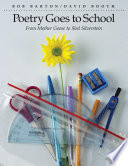 Poetry goes to school: from Mother Goose to Shel Silverstein / Bob Barton, David Booth.
Poetry goes to school: from Mother Goose to Shel Silverstein / Bob Barton, David Booth.
LB1576 .B36 2004
http://resolve.library.ubc.ca/cgi-bin/catsearch?bid=3122696
https://tinyurl.com/yfht3k9n ONLINE
Learn how to create a “culture of poetry” that demonstrates the power of words and strengthens the language lives of children. Poetry Goes to School is a comprehensive resource for teachers who want to fill their classrooms with poetry. The authors have expanded the territory covered in their previous book, Mother Goose Goes to School. In this rich collection, they have gathered and classified a remarkable collection of poetry and teaching strategies into a meaningful, manageable program.
The book is organized around eight inviting units: patterns, word play, nursery rhymes, ceremonies, images, voices, stories, and information. Each unit contains:
- a description of the genre;
- inviting lessons and tools for using them in classrooms;
- sample poems to motivate language discussion;
- ideas for exploring all forms of poetry with children.
Teachers can select from the wide range of response activities that will involve the children in reading, writing, role-playing and the arts. Assessment techniques for supporting the poetry program complement this inviting resource.
 How to Teach Poetry Writing: Workshops for Ages 5-9 / Michaela Morgan
How to Teach Poetry Writing: Workshops for Ages 5-9 / Michaela Morgan
https://tinyurl.com/yetynnyp ONLINE
How to Teach Poetry Writing: Workshops for Ages 5–9 is a practical, activity-based resource of poetry writing workshops. Each workshop provides enjoyable activities for pupils, aimed at building enjoyment and understanding of what poetry is and how to write it. Aiming to encourage speaking and listening skills as well as developing writing, this book includes:
- new workshops and a new emphasis on cross-curricular links;
- spelling, punctuation, and grammar approached in an enjoyable and memorable way via poetry;
- redrafting and revising activities;
- poetry writing frames;
- traditional and contemporary poems from diverse cultures;
- children’s own poems on their favourite subjects;
- performance poetry;
- word games, nonsense, and invented words;
- an A to Z guide to poetry, providing terminology, examples, and a fund of further lesson ideas;
- a very extensive bibliography to encourage further reading and reading for enjoyment.
This book provides teachers with a wealth of material and the inspiration to create a class of enthusiastic and skilled readers, writers, and listeners.
 Teaching poetry: reading and responding to poetry in the secondary classroom / Amanda Naylor and Audrey B. Wood.
Teaching poetry: reading and responding to poetry in the secondary classroom / Amanda Naylor and Audrey B. Wood.
https://tinyurl.com/yhe46ujq ONLINE
With an emphasis on active approaches and the power of poetry to enrich the lives of both teachers and students, Teaching Poetry:
- Provides a succinct introduction to the major ideas and theory about teaching poetry
- Covers the key genres and periods through tried and tested favourites and a range of less well known new and historical poetry
- Illustrates good practice for every approach covered, through case studies of theory and ideas in action in the classroom
- Includes activities, ideas, and resources to support teaching at Key Stages 3, 4, and 5.
Teaching Poetry tackles head on one of the aspects of English teaching that new and experienced teachers alike find most difficult. It offers both a comprehensive introduction to teaching poetry and a rich source of inspiration and support to be mined when faced with an unfamiliar text or an unresponsive class.
Poetry books
 The Earth gives more / Sue Fliess; illustrated by Christiane Engel.
The Earth gives more / Sue Fliess; illustrated by Christiane Engel.
PZ7.F63935 Er 2019
http://resolve.library.ubc.ca/cgi-bin/catsearch?bid=10141289
From leaves falling and becoming fertilizer to raindrops bringing plants to life in the spring, the cycle of every season has something to enjoy. While delighting in all nature offers, we need to remember to respect and treasure the world around us. This sweet rhyming story follows the change in seasons and illustrates how we can all be stewards of the Earth.
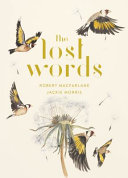 The lost words: a spell book / Robert Macfarlane, Jackie Morris.
The lost words: a spell book / Robert Macfarlane, Jackie Morris.
PZ8.3.M1562 Ls 2018
http://resolve.library.ubc.ca/cgi-bin/catsearch?bid=9380873
In 2007, when a new edition of the Oxford Junior Dictionary — widely used in schools around the world — was published, a sharp-eyed reader soon noticed that around forty common words concerning nature had been dropped. Apparently, they were no longer being used enough by children to merit their place in the dictionary. The list of these “lost words” included acorn, adder, bluebell, dandelion, fern, heron, kingfisher, newt, otter, and willow. Among the words taking their place were attachment, blog, broadband, bullet-point, cut-and-paste, and voice-mail. The news of these substitutions — the outdoor and natural being displaced by the indoor and virtual — became seen by many as a powerful sign of the growing gulf between childhood and the natural world.
Ten years later, Robert Macfarlane and Jackie Morris set out to make a “spell book” that will conjure back twenty of these lost words, and the beings they name, from acorn to wren. By the magic of word and paint, they sought to summon these words again into the voices, stories, and dreams of children and adults alike, and to celebrate the wonder and importance of everyday nature. The Lost Words is that book — a work that has already cast its extraordinary spell on hundreds of thousands of people and begun a grass-roots movement to re-wild childhood across Britain, Europe, and North America.
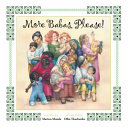 More babas, please! / written by Marion Mutala; illustrated by Olha Tkachenko.
More babas, please! / written by Marion Mutala; illustrated by Olha Tkachenko.
PZ7.M972722 Mr 2017
http://resolve.library.ubc.ca/cgi-bin/catsearch?bid=8867931
“A book celebrating grandmothers of all nationalities and heritages, and the special relationship they share with their grandchildren.”–
Babas are the best! The love of a grandmother is something special. Whether she makes favourite meals, sings songs, plays games, or simply cuddles her grandchildren on her lap, she is always sharing her love.
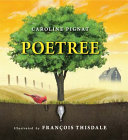 Poetree / Caroline Pignat; illustrated by François Thisdale.
Poetree / Caroline Pignat; illustrated by François Thisdale.
PZ8.3.P558646 Pt 2018
http://resolve.library.ubc.ca/cgi-bin/catsearch?bid=9289748
Award-winning author Caroline Pignat’s first picture book is an intriguing blend of carefully composed verbal images, knit together with extraordinary visuals by award-winning illustrator François Thisdale. The poem is indeed about the yearly cycle in the life of a tree. But it is also an intriguing poetic concoction. The initial letters of each line in each stanza spell out a word that pertains to that tree’s life cycle – SEED, GERMINATE, SHOOT, ROOTS, LEAVES, FLOWERS. It’s a kids’ acrostic.
Young readers will discover the secrets of the poems as they read the text and look at the illustrations that show a rural setting with trees, a farmer, barns, animals and the changing of the seasons. There are also puzzles for the discerning reader.
 All the world a poem / by Gilles Tibo; illustrations by Manon Gauthier; translation by Erin
All the world a poem / by Gilles Tibo; illustrations by Manon Gauthier; translation by Erin
Woods.
PZ4.9.T475 Ah 2016
http://resolve.library.ubc.ca/cgi-bin/catsearch?bid=8370690
In Gilles Tibo’s wonder-filled tribute to poetry, poems bloom in fields, fly on the wings of birds, and float on the foam of the sea. The verses bring poetry to the level of a child.
Each poem is illustrated with Manon Gauthier’s whimsical paper collage art, which is both child-like and sophisticated.
Rhymed or unrhymed, regular or irregular, the verses bring not just poems but the very concept of poetry to the level of a child, making them accessible to all. If all the world is a poem, then anyone can be a poet!
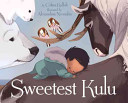 Sweetest Kulu / Celina Kalluk; illustrated by Alexandria Neonakis.
Sweetest Kulu / Celina Kalluk; illustrated by Alexandria Neonakis.
PZ4.9.K125335 Sw 2014
http://resolve.library.ubc.ca/cgi-bin/catsearch?bid=7952586
This beautiful bedtime poem, written by acclaimed Inuit throat singer Celina Kalluk, describes the gifts given to a newborn baby by all the animals of the Arctic. Lyrically and tenderly told by a mother speaking to her own little “Kulu,” an Inuktitut term of endearment often bestowed upon babies and young children, this visually stunning book is infused with the traditional Inuit values of love and respect for the land and its animal inhabitants.”–
An Inuit mother sings to her Kulu–or baby–about animals and other elements in their Arctic world and the gifts they bring to the child, from the summer sun’s warm light to Arctic hare’s love, muskox’s power, and caribou’s patience.
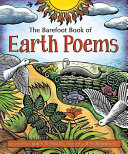 The Barefoot Book of Earth Poems / compiled by Judith Nicholls; illustrated by Beth Krommes.
The Barefoot Book of Earth Poems / compiled by Judith Nicholls; illustrated by Beth Krommes.
PN6110.N2 B37 2016
http://resolve.library.ubc.ca/cgi-bin/catsearch?bid=8868166
“[An] enchanting anthology of nature poems. From the rain forests of Africa to the mountains of Japan, Judith Nicholls has brought toigether poems from many cultures, all of them celebrating out lovely Earth … Includes poems by: Moira Andrews, Buson, Leonard Clark, Emily Dickinson, John Foster, J.W. Haackett, Issa, Kalidasa, Jean Kenward, A.M. Klein, Osip Mandelstam, David McCord, Grace Nichols, Mary Kawena Pukui, Priest Saigyo, Sappho, Ian Serraillier, Snorri Sturlason, Rabindranath Tagore, John Updike, Zaro Weil, Charlotte Zolotow”–Publisher’s description.
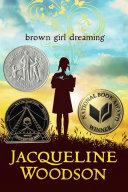 Brown girl dreaming / Jacqueline Woodson.
Brown girl dreaming / Jacqueline Woodson.
PS3573.O64524 Z46 2014
http://resolve.library.ubc.ca/cgi-bin/catsearch?bid=7658512
Jacqueline Woodson, the acclaimed author of Another Brooklyn, tells the moving story of her childhood in mesmerizing verse.
Raised in South Carolina and New York, Woodson always felt halfway home in each place. In vivid poems, she shares what it was like to grow up as an African American in the 1960s and 1970s, living with the remnants of Jim Crow and her growing awareness of the Civil Rights movement. Touching and powerful, each poem is both accessible and emotionally charged, each line a glimpse into a child’s soul as she searches for her place in the world. Woodson’s eloquent poetry also reflects the joy of finding her voice through writing stories, despite the fact that she struggled with reading as a child. Her love of stories inspired her and stayed with her, creating the first sparks of the gifted writer she was to become.
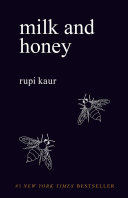 Milk and honey / Rupi Kaur.
Milk and honey / Rupi Kaur.
PR9290.A897 M55 2015
http://resolve.library.ubc.ca/cgi-bin/catsearch?bid=8538526
https://tinyurl.com/ygnv4ozx ONLINE
Milk and honey is a collection of poetry and prose about survival. About the experience of violence, abuse, love, loss, and femininity. The book is divided into four chapters, and each chapter serves a different purpose. Deals with a different pain. Heals a different heartache.
Milk and honey takes readers through a journey of the most bitter moments in life and finds sweetness in them because there is sweetness everywhere if you are just willing to look.
French
 Parfois je suis un renard / Danielle Daniel.
Parfois je suis un renard / Danielle Daniel.
PZ24.3.D35 Pr 2018
http://resolve.library.ubc.ca/cgi-bin/catsearch?bid=9171233
“In this poetic introduction to totemic animals of the Anishinaabe tradition, twelve children identify with different animals such as a fox, deer, beaver or moose. The illustrations depict children wearing animal masks and are accompanied by short poems.”
“Dans cette introduction enjouée aux animaux totémiques de la tradition anishinaabée, douze enfants s’identifient à différentes créatures comme un renard, un chevreuil, un castor ou un orignal. Les illustrations douces et colorées représentent des enfants portant des masques d’animaux et sont accompagnées de courts textes poétiques.”
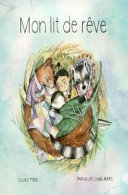 Mon lit de rêve / Gilles Tibo ; [illustrépar] Mathilde Cinq-Mars
Mon lit de rêve / Gilles Tibo ; [illustrépar] Mathilde Cinq-Mars
PZ23.T582 Mn 2018
http://resolve.library.ubc.ca/cgi-bin/catsearch?bid=10058639
“In this collection of poems, Gilles Tibo describes the night, sleep, dreams and stories” —
“Un recueil onirique, tendrement nourri de métaphores et d’allitérations qui ajoutent encore au bonheur de lecture de ces textes soigneusement ciselés et empreints de la fraîcheur et de l’imaginaire de l’enfance. La finesse de l’écriture est sublimée par celle des aquarelles, délicatement rehaussées au crayon noir, dans lesquelles s’anime un bestiaire anthropomorphisé d’une candeur délicieusement attendrissante. Ces tableaux aériens aux douces tonalités feutrées ajoutent une réelle profondeur aux textes en proposant un voyage dans des univers très diversifiés et en effectuant des clins d’oeil à différents pays et époques, un baldaquin faisant ici référence à l’Inde tandis qu’un joli gramophone égaie la soirée pyjama de joyeux lurons qui s’endorment sur le sol, dans des tiroirs ou sur le rebord de la fenêtre. Une saynète mettant en scène une mignonne femelle koala aux joues roses qui bondit sur son lit d’hôpital apporte quant à elle une toute autre signification aux quelques lignes présentées en regard, en rappelant combien la course du temps semble perturbée lorsque l’on est malade: “Pendant la nuit, le jour dort. Pendant le jour, la nuit se repose. Moi, dans mon grand lit d’amour, je dors entre les jours et je joue entre les nuits.”
 La ronde des saisons atikamekw / texte, Hélène Chapdelaine ; illustrations, Christine Sioui Wawanoloath.
La ronde des saisons atikamekw / texte, Hélène Chapdelaine ; illustrations, Christine Sioui Wawanoloath.
PZ23.C4372 Rn 2014
http://resolve.library.ubc.ca/cgi-bin/catsearch?bid=8773452
“Dans plusieurs cultures amérindiennes, les saisons ne sont que l’un des nombreux cycles qui rythment la vie. On peut dire que l’année commence au réveil de la nature plutôt qu’en plein hiver… La rose des saisons atikamekw, avec ses six saisons, compte quand même douze mois. Leur nom en langue autochtone est plus un rappel des changements dans la nature et des opportunités à saisir pour les humains…”–Back of cover.
